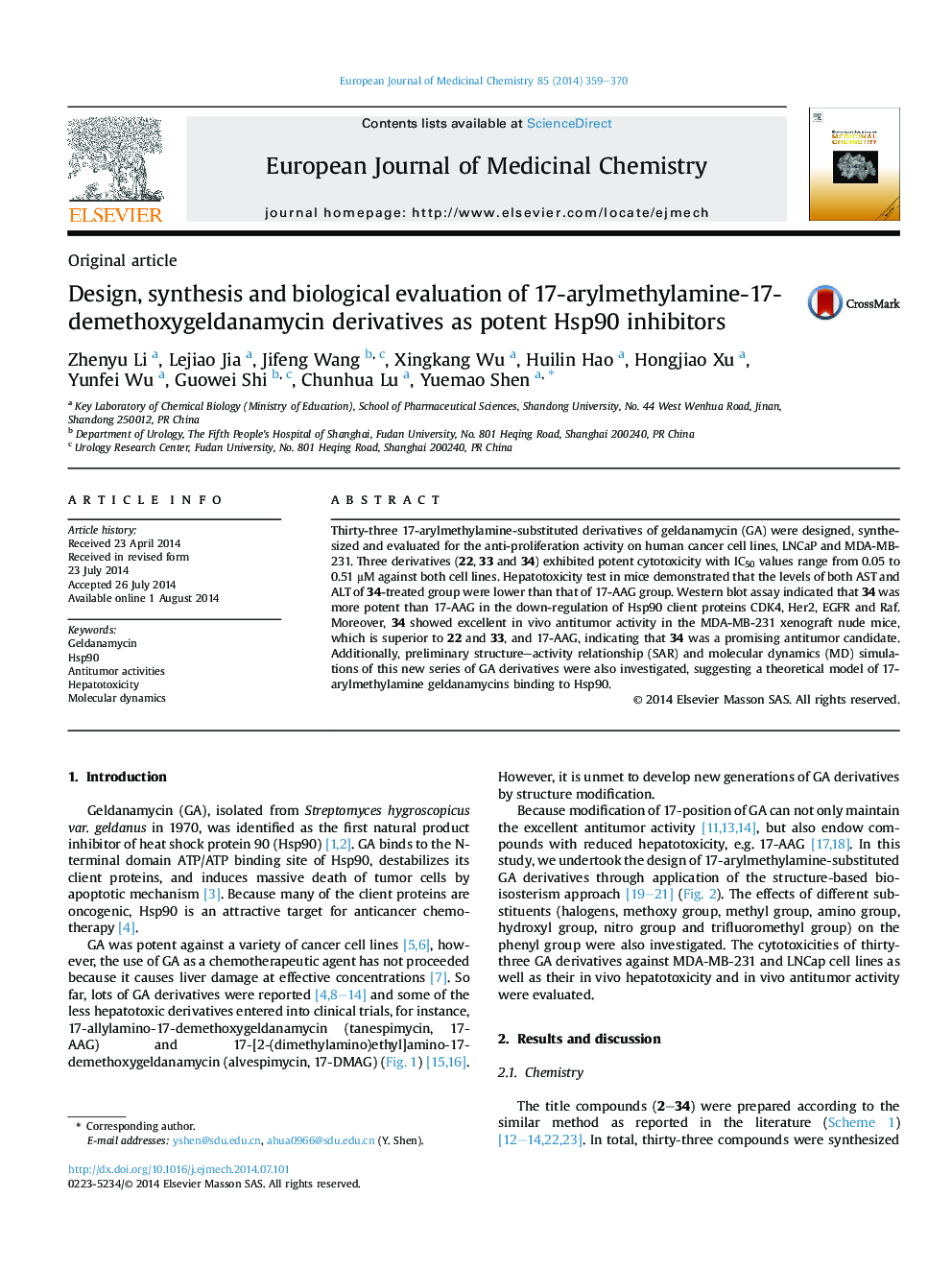| Article ID | Journal | Published Year | Pages | File Type |
|---|---|---|---|---|
| 1392334 | European Journal of Medicinal Chemistry | 2014 | 12 Pages |
•The antitumor activity of 34 is more potent than 17-AAG against MDA-MB-231 cells.•Hepatotoxicity of 34 is lower than 17-AAG in mice.•Compound 34 was more active than 17-AAG at inhibiting Hsp90 activity.•In vivo antitumor activity of 34 is more potent than 17-AAG.•Molecular dynamics simulation of Hsp90–34 complex was performed.
Thirty-three 17-arylmethylamine-substituted derivatives of geldanamycin (GA) were designed, synthesized and evaluated for the anti-proliferation activity on human cancer cell lines, LNCaP and MDA-MB-231. Three derivatives (22, 33 and 34) exhibited potent cytotoxicity with IC50 values range from 0.05 to 0.51 μM against both cell lines. Hepatotoxicity test in mice demonstrated that the levels of both AST and ALT of 34-treated group were lower than that of 17-AAG group. Western blot assay indicated that 34 was more potent than 17-AAG in the down-regulation of Hsp90 client proteins CDK4, Her2, EGFR and Raf. Moreover, 34 showed excellent in vivo antitumor activity in the MDA-MB-231 xenograft nude mice, which is superior to 22 and 33, and 17-AAG, indicating that 34 was a promising antitumor candidate. Additionally, preliminary structure–activity relationship (SAR) and molecular dynamics (MD) simulations of this new series of GA derivatives were also investigated, suggesting a theoretical model of 17-arylmethylamine geldanamycins binding to Hsp90.
Graphical abstractFigure optionsDownload full-size imageDownload as PowerPoint slide
